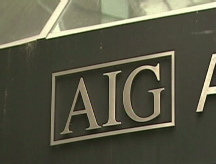AIG: The bailout that won't quit
The world's largest insurer is expected to announce yet another bailout iteration next week. But some say its options are limited.
NEW YORK (CNNMoney.com) -- The government may again have to overhaul its bailout of troubled insurer American International Group.
According to published reports, AIG may soon be announcing the third revision to its now $152.2 billion bailout package.
Driving the possible new bailout is an expected hefty quarterly loss at AIG (AIG, Fortune 500). Conditions at its core business are worsening, clients are bailing and the company has been largely unable to sell off enough assets to unwind the trillion dollar company in an orderly way -- the crux of the original bailout five months ago.
"What's clear is that AIG and the government know that the current plan is not viable," said Donald Light, senior analyst with Celent. "It's a good thing that there's joint recognition that they need a new plan."
The company said it would not comment until it announces its fourth-quarter results, but acknowledged that it is reviewing its options with the government.
"We continue to work with the Federal Reserve Bank of New York to evaluate potential new alternatives for addressing AIG's financial challenges," a company spokesman said in a statement. "We will provide a complete update when we report financial results in the near future."
Another bailout would begin another chapter in what has developed into a long, difficult story.
AIG's troubles stem from its financial products unit, which sold credit default swaps - essentially insurance contracts - on collateralized debt obligations, or CDOs. The value of the CDOs plummeted in 2008, and AIG was forced to post more collateral to back up the swaps.
The company also took sizeable writedowns on its subprime mortgage-backed securities holdings, which plummeted in value as the housing crisis wore on.
AIG suffered a loss of more than $18 billion in the nine months prior to its Sept. 16 bailout, and shares of the company tanked, limiting its ability to raise cash. Credit raters downgraded AIG on Sept. 15, leading the stock down even more - 61% on the day before and 70% the day of its first bailout.
Government officials decided they had to act lest the world's largest insurer file bankruptcy. At the time, AIG had $1.1 trillion in assets and 74 million clients in 130 countries, so the company's collapse would likely roil the global markets.
As a result, the Federal Reserve extended a two-year $85 billion bridge loan to AIG that would help the company stay afloat as it worked to unload its troubled assets. In return, the government took a 79.9% stake and charged a hefty interest rate.
AIG quickly encountered problems with its bailout.
On Oct. 8, just three weeks after its initial loan, the New York Fed extended an additional $37.8 billion life line in the form of a new lending facility from which AIG could borrow to fund its businesses.
But it still wasn't enough. AIG had to borrow more and more from the government just to post collateral on its credit default swap agreements, and the fee for the loans became too punitive.
On Nov. 10, the government completely overhauled AIG's bailout. It reduced the bridge loan to $60 billion and cut the interest rate. The main Fed extended the borrowing period to five years, and the New York Fed created two new lending facilities.
One lending program would try to contain damage from the company's residential mortgage-backed securities; the other would try to purchase investors' CDOs for 50 cents on the dollar and free AIG from its insurance agreements on the CDOs.
The Treasury also made a $40 billion capital investment under the Troubled Asset Relief Program. AIG pays a 10% dividend on the government's preferred shares.
Still, the current weak global economy has proven to be a difficult environment to sell assets in.
So far, AIG has sold off just a handful of companies, the biggest of which was a stake in a Brazilian bank Unibanco for $820 million to Uniao de Bancos Brasileiros. It also sold its Hartford Steam Boiler unit to Munich Re for $742 million. In all, AIG has been able to sell only $2.3 billion of its assets.
Experts say the company and the government must do something to solve the problem, but options are limited.
"It's in everyone's interest to keep the insurance units viable and operating, and it's in the financial market's interest to keep the non-insurance derivatives and guarantees above water," said Light. "I'd keep the insurance companies viable and in private hands and let the government handle the toxic stuff, which is not insurance-related."
One option is to have the government take over some of AIG's units by converting its preferred shares into common stock, expert say. That will save AIG from having to pay the large dividend to the Treasury. But some say the best option is just to sell those assets off - no matter the price.
"Ultimately the government would want to sell the companies it takes over, so why not just sell them now?" said Gary Ransom, an analyst at Fox-Pitt Kelton. "There is a price, right now, today. It may be a disappointing price, but they need to sell."
Still, with reports this week that AIG might report a $60 billion quarterly loss, the company may have to seek to restructure in bankruptcy court.
"If this $60 billion loss is correct, it's hard to see how AIG has a future where it stands alone," Ransom said. "You wonder if there's enough for everyone they owe money to. Chapter 11 may be the answer." ![]()



